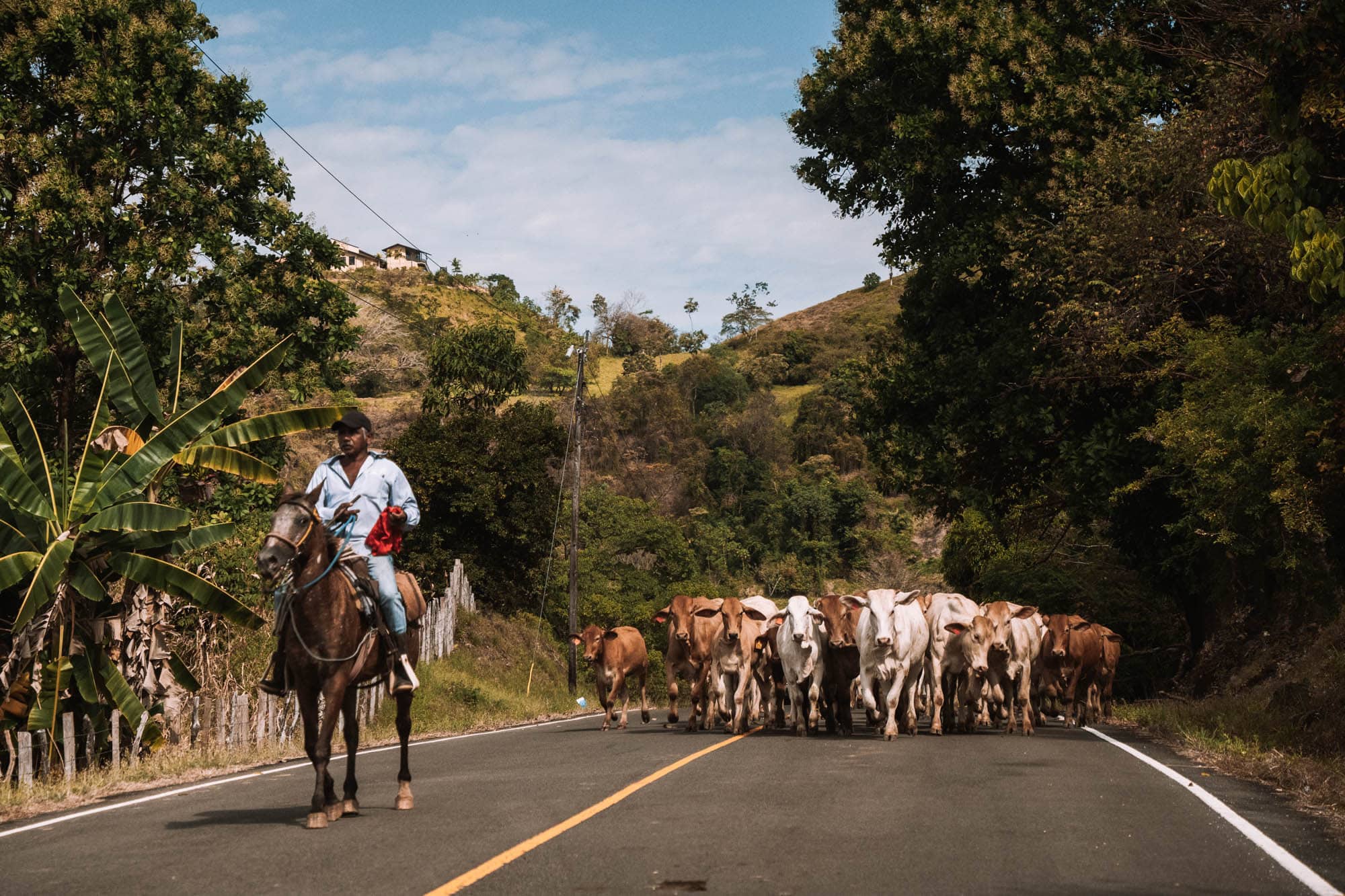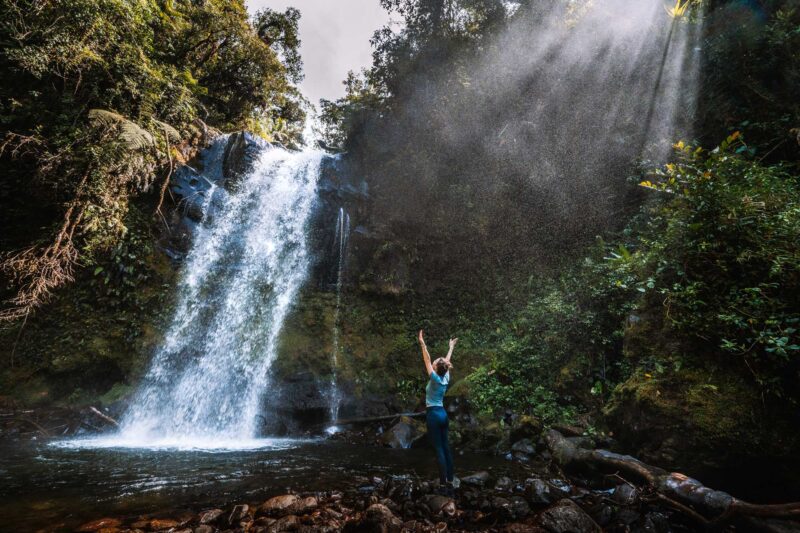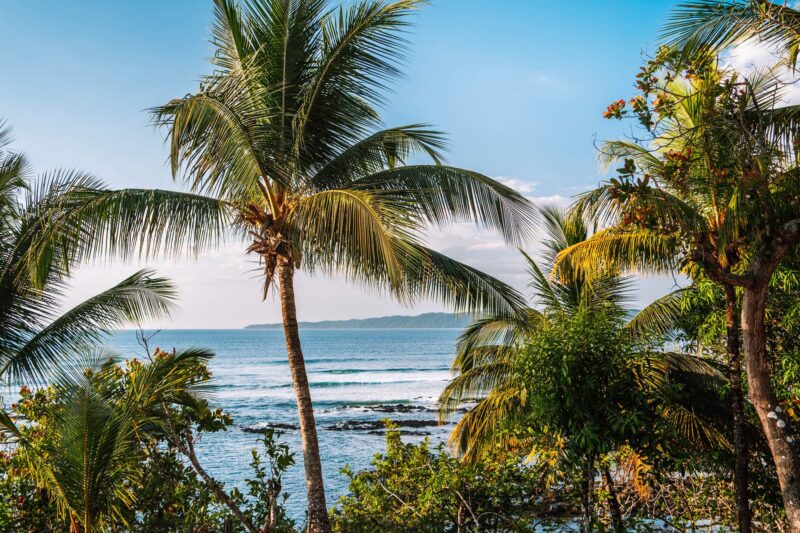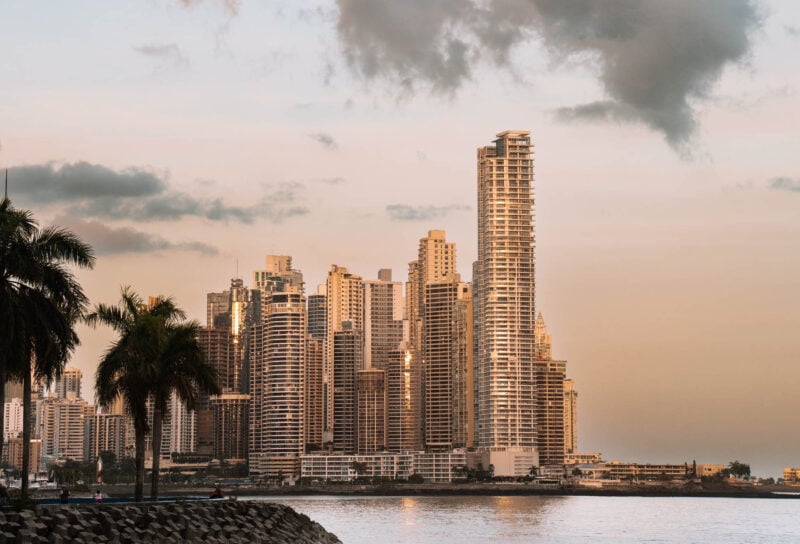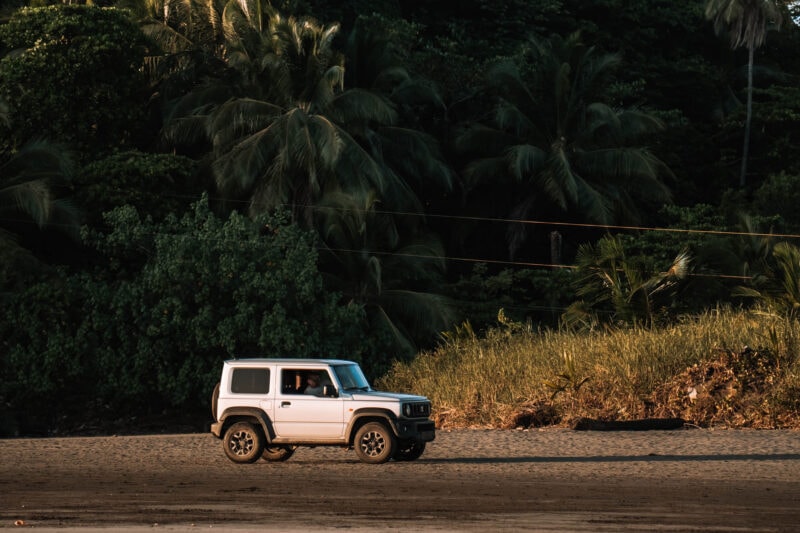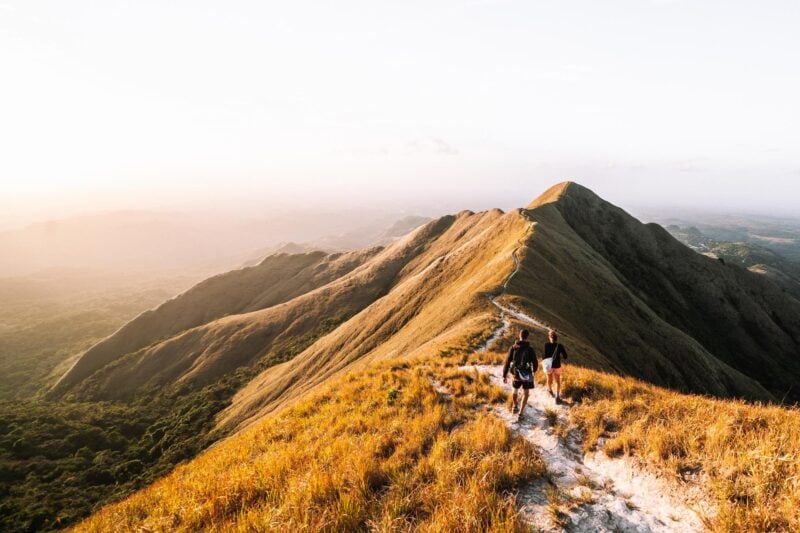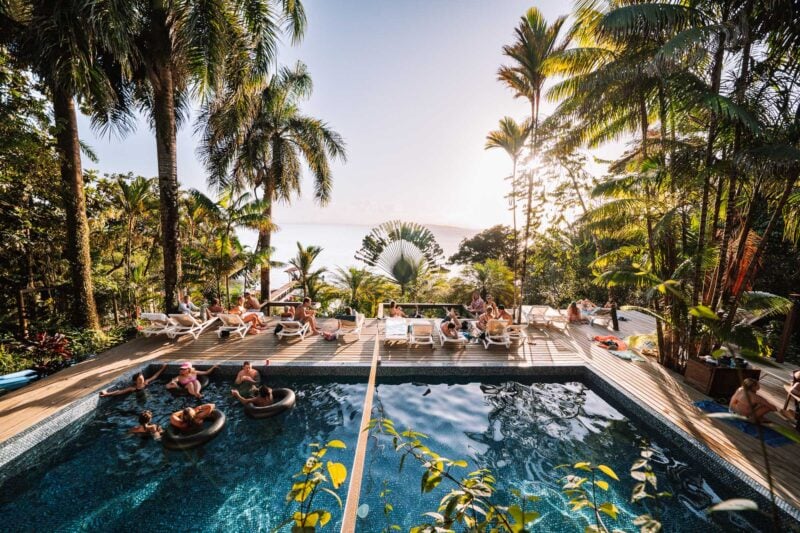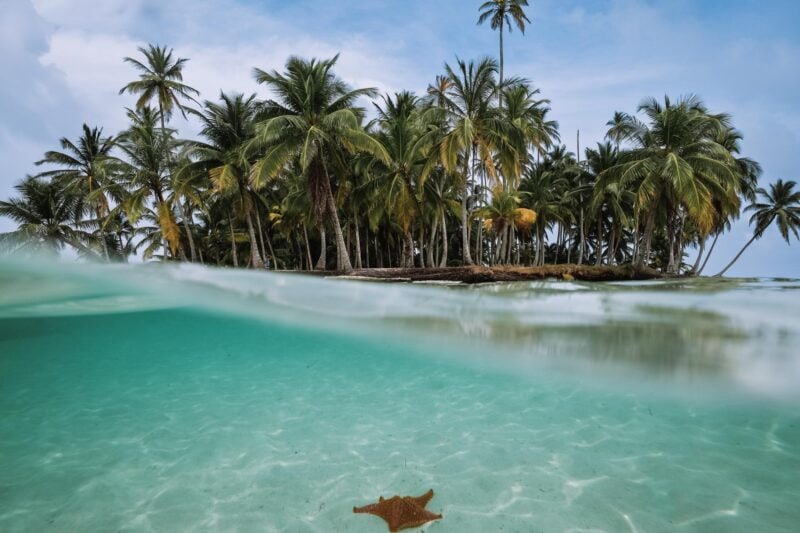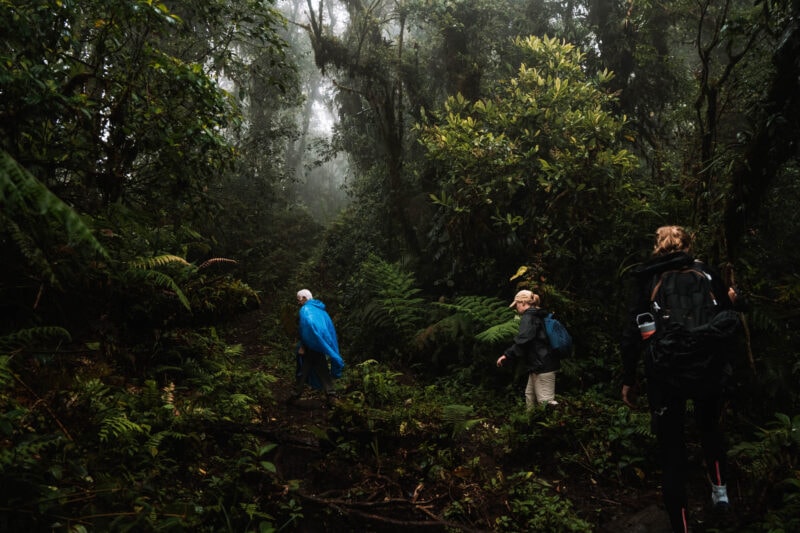When most people think of Panama, they immediately picture the Panama Canal – but this small Central American country has so much more to offer. A trip through Panama is a journey through diverse and vibrant landscapes, from the pristine paradise beaches to the rugged mountain terrain. You can explore the culture of the indigenous Kuna Indians on the San Blas Islands, hike through the dense jungles of Boquete, and walk the jagged mountaintops of an old volcano in El Valle de Anton. With its relatively short travel distances, Panama is a perfect destination for a tour, allowing you to experience the country’s many facets without spending hours on the road. To make the most of your trip, be sure to read all our practical tips for traveling in Panama in this article!
#1 The best time to travel to Panama
Panama has a tropical climate, making it nice and warm all year round. The country has two seasons; the dry season and the rainy season. The dry season runs from December to April and this is the best time to travel to Panama. In these months you have the best chance of clear blue skies. While rain is always a possibility in Panama, it’s simply more common during the rainy season. However, this is also what makes Panama such a lush and green country – so don’t be surprised if you experience a refreshing shower every now and then. The rainy season in Panama typically lasts from May to November, with heavy tropical showers often occurring in the late afternoon. While most of these showers are short-lived, there may be occasions when they last longer or occur more frequently. If you’re planning a trip to Panama, it’s best to avoid the months of September and October, as these are typically the wettest months of the year.


#2 This is how ATM withdrawals and payments work in Panama.
In Panama they use the US Dollar (USD). Furthermore, Panama has its own currency in the form of coins, known as the Panamanian Balboa (PAB). This currency is worth the same as the dollar and that is why you can pay with both currencies in Panama during your trip. So it is possible that you pay something in dollars and get change in Balboa coins. It’s always a good idea to have enough cash on hand. While you can withdraw money from ATMs in many places, smaller villages like Playa Venao and Santa Catalina may not have ATM access. To avoid any issues, be sure to carry enough cash with you. In some cases, an ATM may not accept your debit card, so it’s helpful to have a credit card as well. Additionally, keep in mind that your bank may have a daily limit on ATM withdrawals, so it’s a good idea to increase your limit in advance or spread your withdrawals over multiple days. And don’t forget to set your card to work worldwide before your trip to avoid any issues. With these tips in mind, you’ll be well-prepared to make the most of your travels in Panama.
Tip: If you’re traveling to other countries in Central America after Panama, try to use up your Balboa coins. Dollars are still usable or exchangeable in many other countries in Central America.
#3 Which plug to use in Panama?
To use electronic devices in Panama, you will need a world plug with an adapter A or B, which is also compatible with North and Central America. A convenient option is to purchase a universal travel plug that allows you to connect multiple USB cables. This plug can be used worldwide and will come in handy for your future travels.

#4 Buy a prepaid SIM card
To access the internet and stay connected while traveling in Panama, we recommend that you purchase a local SIM card with data. This is especially useful if you plan to rent a car in Panama and need GPS navigation. You can easily get a prepaid SIM card from telephone shops or most supermarkets, and add credit according to your usage. For instance, +Móvil (MásMóvil) offers SIM cards with various data and day packages available. Once you have your SIM card, you can enjoy unlimited data for a set number of days at a reasonable cost. When your plan expires, you can simply recharge your credit to continue using your device.
#5 Tips voor transportation in Panama
There are two main ways to travel through Panama: taking a bus or renting a car and driving yourself. During my trip, I rented a car for the first 11 days and then used a combination of local buses and shuttles. Below, I’ll go over the pros and cons of each option.
Traveling by bus
If you’re traveling on a tight budget in Panama, Local buses are very cheap, and fares are usually less expensive than other types of transportations. Keep in mind that it may take more time to get to your destination, and you may need to transfer between buses to reach some areas, such as Playa Venao and Santa Catalina. Multiple bus transfers can be time-consuming, but it’s a cost-effective option
Traveling by shuttle bus
If you want to travel a little faster and more comfortably, there are also shuttle buses that take you from hotel to hotel between many destinations. You can usually arrange this through your accommodation and some routes you can book in advance online. This is a bit more expensive than public transport but it will save you a lot of time and effort.
Traveling by rental car
Did you know that Panama is the perfect country for a road trip? The distances are relatively short, traffic is generally quiet, and the scenery is beautiful. Renting a car offers more speed, flexibility, and independence compared to relying on buses or taxis. While it’s not the most affordable option, renting a car can be the best way to travel through Panama. However, it’s recommended that you rent a car for only part of your trip, depending on your itinerary. Check out my tips for renting a car in Panama to determine which parts of your journey would benefit from having a rental car.
#6 Tips for hiking in Panama
Panama offers many beautiful day hikes at many locations around the country. In El Valle de Anton, you can explore the stunning mountains, while Boquete takes you deep into Panama’s jungle. If you’re planning to go hiking in Panama, here are some helpful tips to keep in mind.
- Bring good (hiking) shoes. They don’t have to be real mountain shoes, but hiking shoes with a good profile are sufficient. The paths are not always flat and in the jungle, the paths can be muddy.
- Download the Maps.me app on your phone and download the map of Panama in advance via wifi. In this app, you can see all the hiking trails.
- Bring a raincoat or poncho. Even in the dry season, you can sometimes be surprised by a tropical shower. The rain usually doesn’t last long, but it’s nice to be able to put on something so you’re not immediately soaked.
- Note that it’s not equally warm everywhere in Panama. It’s a few degrees cooler and sometimes a bit breezy higher up in the mountains. So, a sweater is not unnecessary.
- Hiking alone is not always smart. Paths can be muddy and slippery, making accidents happen easily. It’s best to go with someone or book a guide who can tell you more about the area.
- Always bring enough water and snacks for the road.
#7 Avoid itchy bumps
Panama’s gorgeous beaches are popular with tourists, but sand flies can be a problem. These flies can cause itchy bumps and, in rare cases, transmit parasites. Although the risk of infection is low, it’s best to take precautions. Sand flies are easy to identify as small, black flies that bite until they bleed. The bites create a red spot with a dark red dot in the center, which can be irritating for several days. Insect sprays are ineffective against sand flies, but coconut oil is a cheap and effective preventive measure against bites.In the event of a bite, applying a soothing ointment like Tiger Balm or Azaron Stick can provide temporary relief from itching.
Tip: Scratching insect bites can lead to wounds that can easily become infected in tropical environments, so it’s best to be avoided. This advice also applies to mosquito bites and other types of bites. You can get the medication cetirizine at any pharmacy, which helps reduce the itching feeling, within an hour.

#8 How tipping and bills work in Panama
In Panama, many restaurant prices are indicated without taxes. Keep in mind that when you pay, an additional 7% VAT will often be added. Tipping is not mandatory in Panama, but it is customary. You can typically leave around 10% if you are satisfied with the service.
#9 Bring a refillable bottle
In Panama, there are many refill stations available where you can easily refill your water bottle. Many accommodations and public places have refill points, which means there is no need to buy a new bottle of water each time. By bringing your own refillable bottle, you can save money and help the environment.
#10 The ultimate travel itinerary for Panama in 2 to 4 weeks
Panama is a wonderful country to travel through. Over the course of three weeks, you can experience the jungle, mountain hiking, and beautiful beaches. Wildlife sightings are also common on this trip. Our ultimate Panama travel itinerary is filled with adventures you won’t forget.

